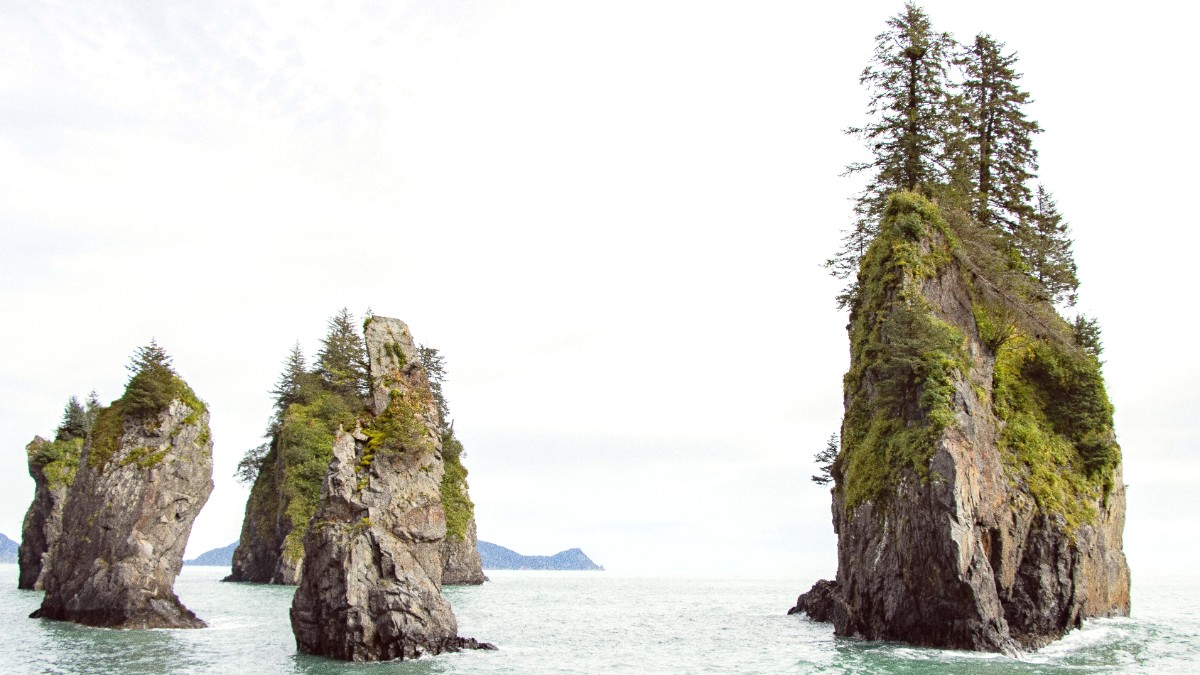
Alaska, USA
For millennia, Alaska Native peoples have relied on what the land and sea yield. Their diet centers around fish, marine mammals, caribou, moose, and wild berries.
Store-bought food, imported from the contiguous United States, is extremely expensive and often less preferred.
In Native communities, sharing food, especially subsistence foods, is a strong cultural practice. Acceptance of traditional foods, even a small portion, shows respect.
Dining out is generally functional, focusing on sustenance rather than elaborate culinary experiences. Table manners are typically casual.
Standard American meal times (breakfast, lunch, dinner) are observed in established eateries. Smaller establishments might have limited hours.
A staple throughout Alaska. Find it at local markets or some restaurants in regional hubs. A hearty, flavorful delicacy.
A common dish for visitors.
A common meat, often served in breakfast dishes, sandwiches, or as hot dogs. Look for it in local delis or convenience stores in Nome or Bethel.
Offers a distinct, lean flavor.
Hearty, wild game stews often prepared in local homes or served at community events. These offer warmth and sustained energy.
Taste local wild game.
Wild berries are harvested in late summer. Fresh salmon is abundant during their runs. Caribou and moose are harvested during hunting seasons.
Community potlucks and festivals often feature these traditional foods, a chance to experience local culinary traditions.
No fine dining establishments in the traditional sense. Remote lodges or hotels may offer higher-end dining experiences, but they are generally simple.
Limited in number. In Nome, options include Airport Pizza or the Bering Sea Bar & Grill. Bethel has a few diners and pizza places.
Very few options. Convenience stores or small local markets are the main sources for budget-friendly food items.
International cuisine options are very limited. One or two Chinese or Filipino restaurants exist in larger hubs.
These reflect historical migration patterns.
Street food is almost non-existent in the commercial sense. Any "street food" would be informal local vendors at community events or festivals, offering traditional foods.
Check local event schedules for these unique opportunities.
Extremely challenging to find. Pack supplemental foods.
Non-existent. Bring your own prepared food items.
Limited awareness. Self-cater or communicate clearly.
Carry an EpiPen for severe allergies; manage your own food safety.
These are not commercial operations but living traditions, where visitors might observe and learn about local foodways.
Directly experiencing a traditional meal.
Remote lodges, especially fishing lodges, often offer specialized, all-inclusive dining experiences centered on fresh, local catch.
Taste the region's bounty directly from the source.
Local availability of specific items depends on season and hunting/fishing success. Visitors should plan accordingly.
Dining options remain limited. Expect local eateries to focus on classic American fare or Asian-American fusion, with local ingredients where possible.
Finding options is extremely challenging. Meals often focus on meat and fish. Groceries are expensive, fresh produce scarce.
Availability is non-existent. Travelers requiring specific religious dietary preparations should plan to bring their own prepared food items.
Very limited awareness or options. Restaurant staff may not understand complex restrictions.
Always carry any necessary medications for dietary reactions. Keep them accessible during travel.
Prioritize health and safety.
Use simple, direct language when explaining dietary restrictions to local staff.
Clarity helps prevent misunderstandings.
The most authentic culinary experience comes from an invitation to a traditional Alaska Native meal.
Lodges often feature fresh, locally caught fish, providing a direct taste of the regional bounty.
Though rare, small informal markets might offer fresh produce or fish in season.
Flexibility is when dining on Alaska's West Coast. Embrace the unique local ingredients and the cultural experiences they represent.